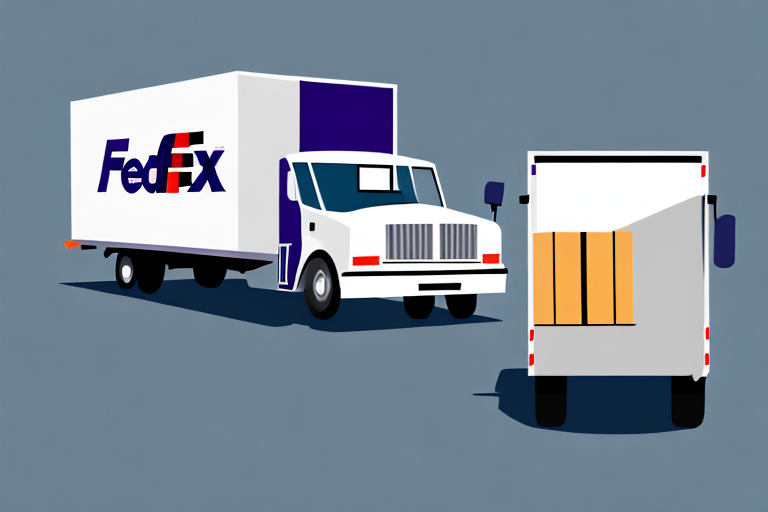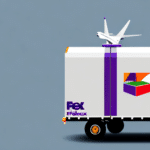What is a Shipment Exception and Its Importance
A shipment exception is an unforeseen circumstance that disrupts the normal shipping process. These exceptions can lead to delays, rerouting, or even the return of a package to the sender. Understanding shipment exceptions is crucial for both customers and retailers to ensure a smooth delivery experience and maintain trust in the shipping process.
Common Types and Causes of Shipment Exceptions
Shipment exceptions can arise from various factors, each presenting unique challenges within the shipping process:
- Weather-Related Delays: Natural events like hurricanes, snowstorms, and floods can halt transportation networks, causing significant delays.
- Incorrect Address: Mistakes in shipment labeling can prevent packages from reaching their intended destination, leading to misdelivery or return to sender.
- Customs Clearance Issues: Incomplete or incorrect documentation can cause packages to be held at international borders, delaying delivery.
- Package Damage: Damaged packages may be delayed, rejected by carriers, or require additional handling, impacting delivery timelines.
- Technical Glitches: Failures in tracking systems or barcode scanning can disrupt the shipping process, causing delays in updates and handling.
- Delivery Attempts: Failed delivery attempts due to recipient unavailability can result in packages being held at local facilities or returned to sender.
Identifying Shipment Exceptions in Tracking Information
When a shipment exception occurs, it is typically reflected in the tracking information provided by the carrier. Customers should regularly monitor their package's tracking updates to identify any exceptions early. Shipment exceptions may appear as alert messages or status updates such as "Delayed Due to Weather," "Address Issue," or "Customs Hold." Prompt identification allows for quicker resolution and minimizes inconvenience.
Impact of Shipment Exceptions on Delivery Timeframes and Costs
Shipment exceptions can significantly extend the expected delivery time. Depending on the nature of the exception, delays can range from a few days to several weeks. Additionally, exceptions may incur extra costs, such as:
- Return Shipping Fees: If a package is returned due to an address error, return shipping fees may apply, increasing overall costs.
- Additional Handling Fees: Special instructions or additional handling requirements can lead to extra charges, affecting the total shipping expense.
Retailers should account for these potential costs and timeframes when planning their supply chain operations to maintain profitability and customer satisfaction.
Strategies to Prevent and Handle Shipment Exceptions
Tips for Customers
- Ensure Accurate Address Information: Double-check the recipient's address before placing an order to prevent misdelivery.
- Provide Clear Delivery Instructions: If specific delivery instructions are needed, communicate them clearly to the carrier to facilitate successful delivery.
- Track Packages Regularly: Utilize tracking services to stay informed about your package's progress and address issues promptly.
Best Practices for Retailers and Suppliers
- Implement Quality Control Measures: Verify address information and ensure proper packaging to prevent damage and misdelivery.
- Use Reliable Shipping Carriers: Partner with carriers known for reliability and efficient handling to minimize the risk of exceptions.
- Automate Tracking Systems: Utilize automated tracking to quickly identify and address shipment exceptions as they occur.
- Maintain Clear Communication: Keep customers informed about their shipment status and any potential delays to manage expectations.
What to Do if Your Package is Stuck
- Contact the Carrier: Reach out to the carrier for detailed information and potential resolutions regarding the shipment exception.
- Verify Shipment Details: Ensure all shipment information is correct and update any necessary details to facilitate resolution.
- Explore Alternative Solutions: Consider options such as expedited shipping, rerouting, or refunds if the issue persists.
Role of Technology and Freight Forwarders in Managing Exceptions
Technological Solutions
- Artificial Intelligence and Machine Learning: These technologies can predict potential delays by analyzing historical data and current conditions, enabling proactive measures.
- Internet of Things (IoT): IoT devices can monitor shipment conditions and locations in real-time, allowing for immediate responses to any issues.
- Blockchain: Enhances supply chain transparency and security, reducing the risk of documentation errors and improving traceability.
The Role of Freight Forwarders
- Expertise in Global Shipping: Freight forwarders possess experience that helps in anticipating and mitigating potential shipment exceptions.
- Customs Clearance Assistance: They ensure proper documentation, preventing delays at international borders.
- Negotiating with Carriers: Freight forwarders can secure better rates and priority handling by leveraging established relationships with shipping companies.
Legal Considerations and Future Trends in Shipment Exceptions
Legal Considerations
- Carrier Liability: Carriers are typically liable for loss or damage during transit, but terms vary. Customers and retailers should review the carrier's liability policies to understand their rights and responsibilities.
- Contracts and Agreements: Ensure that contracts clearly outline responsibilities and procedures in case of shipment exceptions to avoid misunderstandings and legal disputes.
Future Trends
- Automation: Increased use of automated sorting and delivery systems to enhance efficiency and reduce human error.
- Data Analytics: Leveraging big data to predict and prevent potential shipment disruptions, allowing for more proactive management.
- Sustainable Practices: Implementing eco-friendly shipping methods to comply with environmental regulations and meet consumer demand for sustainability.
Conclusion: Why Understanding Shipment Exceptions is Crucial for Successful Shipping
Shipment exceptions are inevitable but can be effectively managed with the right strategies and tools. By understanding their causes, impacts, and solutions, both customers and retailers can ensure a smoother shipping experience, maintain customer satisfaction, and uphold business reputation. Continuous improvement and adaptation to technological advancements are key to minimizing the disruptions caused by shipment exceptions.




















